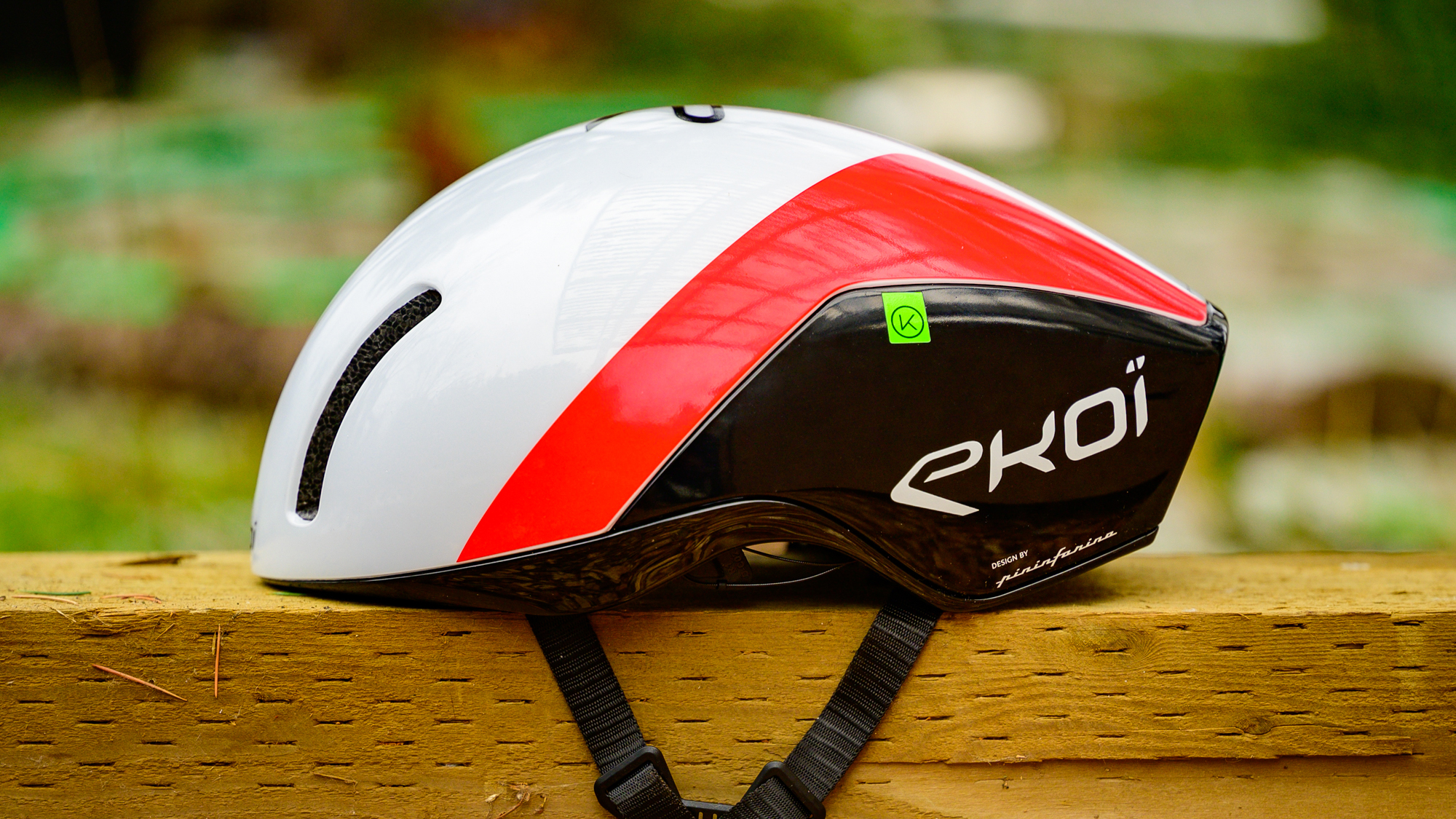
Price: $248.49 / £195.99 / £195.99
Available colours: Black and red / White and red
Rotational Impact technology: Koroyd
Weight: 334g as measured in size M
In the world of modern cycling aerodynamics are king and the best aero helmets offer as much aero savings as a wheelset. In short, if you want to go fast, helmets matter and an aero helmet is a great way to cheat the wind. Aerodynamics is also a great way to add value to the buying proposition. For all these reasons, there are a lot of aero helmets hitting the market.
Despite all the options out there, when the Ekoi Aerodinamica appeared last summer it still managed to make a splash and capture attention. It could be that Ekoi is a common name in WorldTour racing or maybe it was the choice to use an incredibly eye-catching black and white "camouflage" design when the Aerodinamica first appeared. It certainly doesn't hurt to have the famous Pininfarina name attached to a helmet design for the first time ever. If you aren't familiar with the brand Pininfarina is a specialist Italian car design firm who have designed vehicles for the likes of Ferrari, Maserati and Alfa Romeo. Whatever the reason though, hype doesn't mean you should buy something.
Pininfarina designed a bike helmet for the first time, but that doesn't mean it's good. The Ekoi Aerodinamica appeared in the WorldTour but, again, that doesn't mean it's good. If you are considering a new helmet, you need something that's worth your money. Aero helmets might be a bit of a black box but a helmet is a helmet and you have to wear it. I took the Ekoi Aerodinamica out on a bike to test what it was like to actually wear. Divorced from sponsored racing and hype, should you take a leap on this new helmet? That's the question I've asked during my time with this helmet. Keep reading to see if this is the right helmet for you.
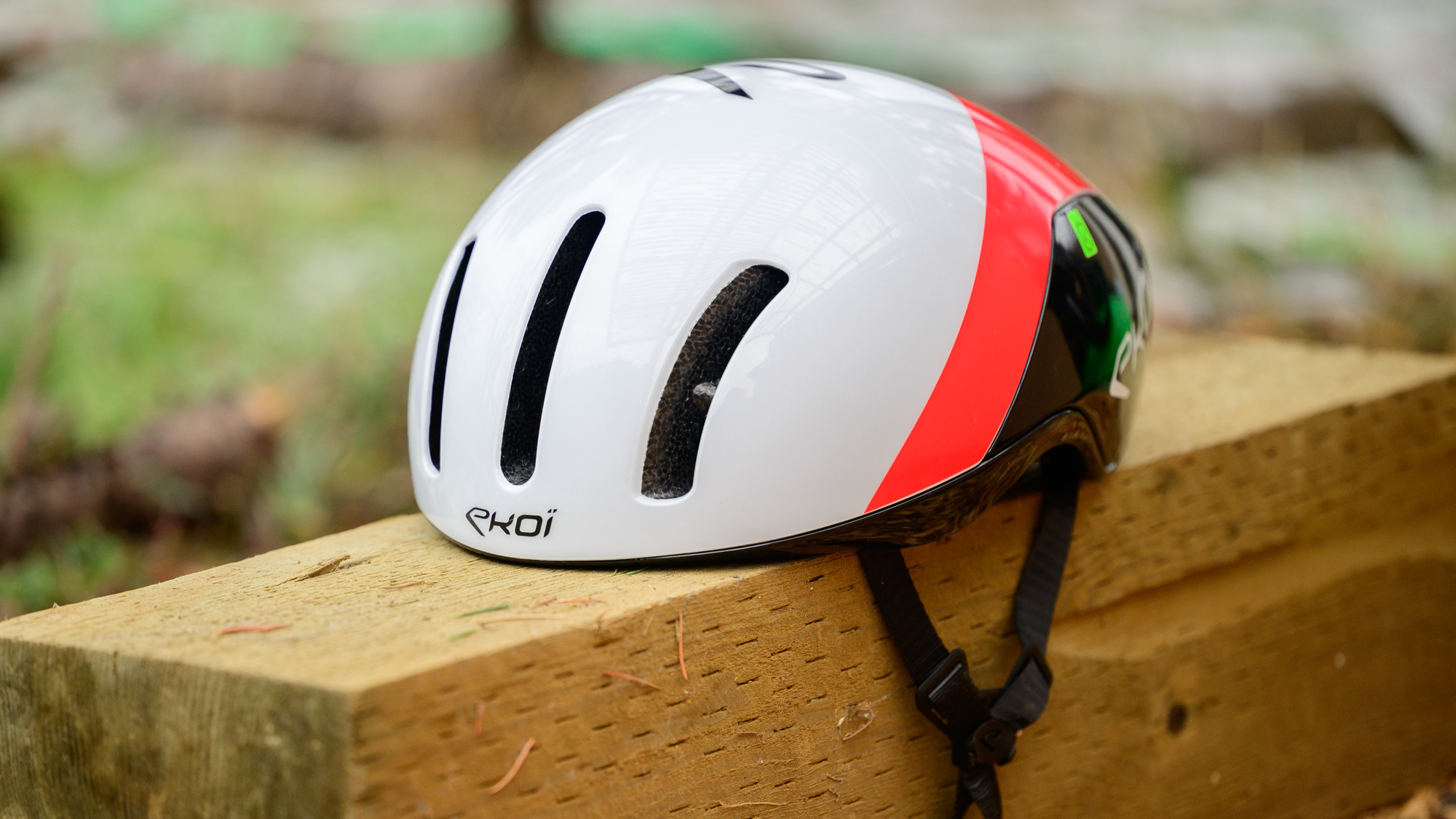

Design and aesthetics
There's a kind of collective understanding that aero bikes all look a bit the same. My colleague Will Jones did a bit of a deep dive into the truth, or not, of that perception but so far helmets have found refuge from sameness. Aero helmets have proliferated but, with fewer UCI rules involved, the silhouette of the different brands has remained fairly different. Perhaps that is changing though as the Ekoi Aerodinamica does look remarkably similar to the Trek Ballista that came to market in early 2023.
The similarities likely come from the fact that both Ekoi and Trek helmets appear to pull a pattern from a full-force TT helmet. Also, despite the passing similarities, the two designs differ more than you might first think. As you examine the two side by side you'll notice that the Ballista is a longer design that points the exhaust air down while the Ekoi is shorter. Although there are similarities, the two helmets look to actually pull patterns from different types of TT helmets.
If I leave the comparison behind a bit and instead give the Ekoi Aerodinamica a chance to stand alone, the first thing you might notice is how few vents there are. Airflow for the whole helmet comes down to three vertical slots in the front paired with a large, divided, rear exhaust. The outer two vents have a curve to them as well as a small support brace in the centre. The central intake lacks both a divider and a curve but still matches the bulbous curve of the helmet as the eye travels towards the back.
Visually the combined effect of the unusual curve and the limited venting feels a bit mid-century modern to me. That's further helped by the slight peak in the centre of the bottom front edge and the red/white colour scheme. Driving it home is the Pininfarina logo with its golden age script that appears at the rear bottom edge on either side plus the centre section. I suspect the effect would diminish slightly in black however the black and red colorway drives the point home further with the use of repeating lines and a stripe of red on top. It seems Pininfarina is making a reference to cars like the 1935 Alfa Romeo 6C Pescara or the 1971 Ferrari Berlinetta Boxer that the brand is famous for.
Although the exterior might lack in the way of venting, the real story of airflow reveals itself when you flip the helmet over. Paired with the three large front vents there is extensive internal shaping to efficiently move the air across your head and out the short rear vent. It appears far more wind tunnel optimisation went into moving air through the helmet compared to over it.


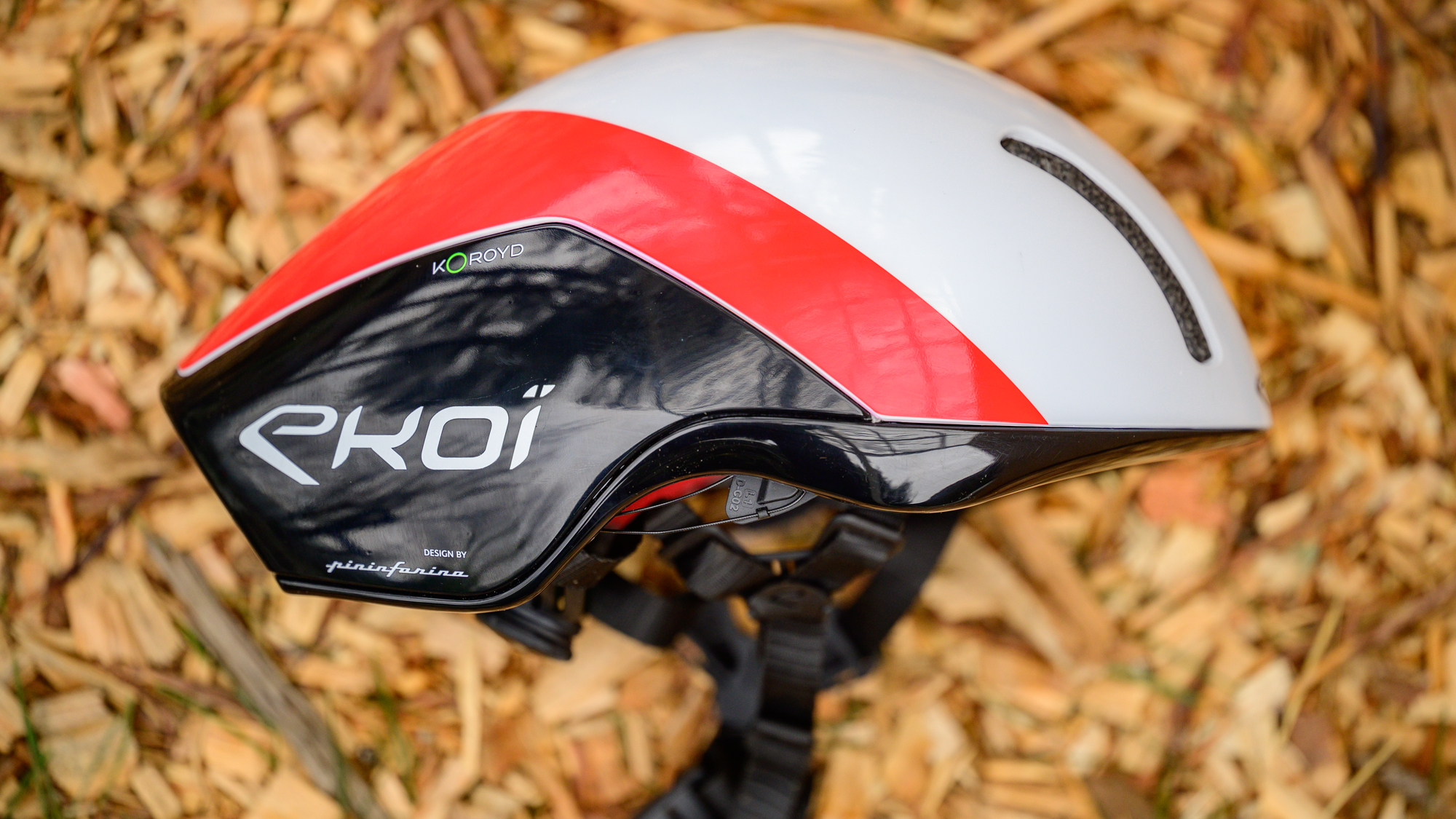
What you'll also notice on the interior is the use of Koroyd. Koroyd is a material that replaces EPS foam in a helmet with what looks like a series of plastic straws bundled together. Because the centre of each "straw" is open it's possible to use Koroyd as a way to add airflow but in this case, Ekoi is only using Koroyd "plugs." The material is inset into the EPS under the raised channels where the padding touches your head. That covers four sections on the top and sides of the helmet and EPS covers the outer surface of the Koroyd.
Although this arrangement removes any airflow advantage it does, presumably, let the Koroyd act as an angular impact technology. This helmet lacks both stated details on that front and Virginia Tech testing but the ability to crush and shift during a collision is one of the primary advantages that Koroyd has. Another advantage that Koroyd enjoys is weight reduction however at 334 grams in size medium, the Aerodinamica is not a lightweight helmet. What's offsetting any Koroyd weight saving is likely the retention system.
When helmets like the recent Lazer Z1 Kineticore lean into weight savings, it's normal for designs to adopt tricks like lightweight straps. In the case of the Aerodinamica, Ekoi seems to have shifted in the opposite direction. The straps on this helmet are thick and heavy material that resists bunching and flapping in the wind. There's also a relatively heavy Fidlock magnetic buckle and heavy strap dividers. The rear cradle is a bit less weighty using an ATOP Lacing System that pulls against wires and floats free of the rear of the helmet. It's an arrangement that is again reminiscent of the Ballista.
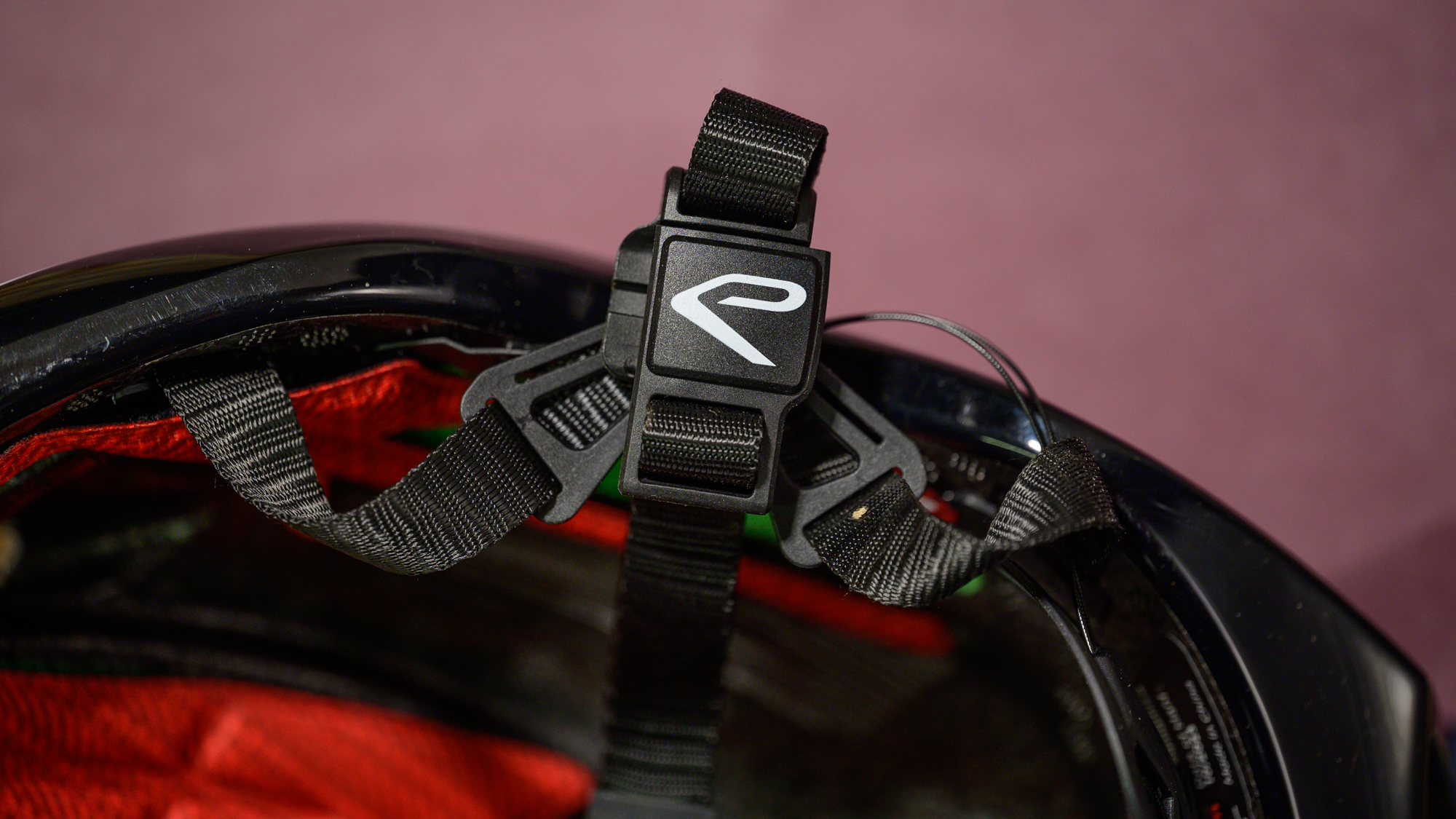
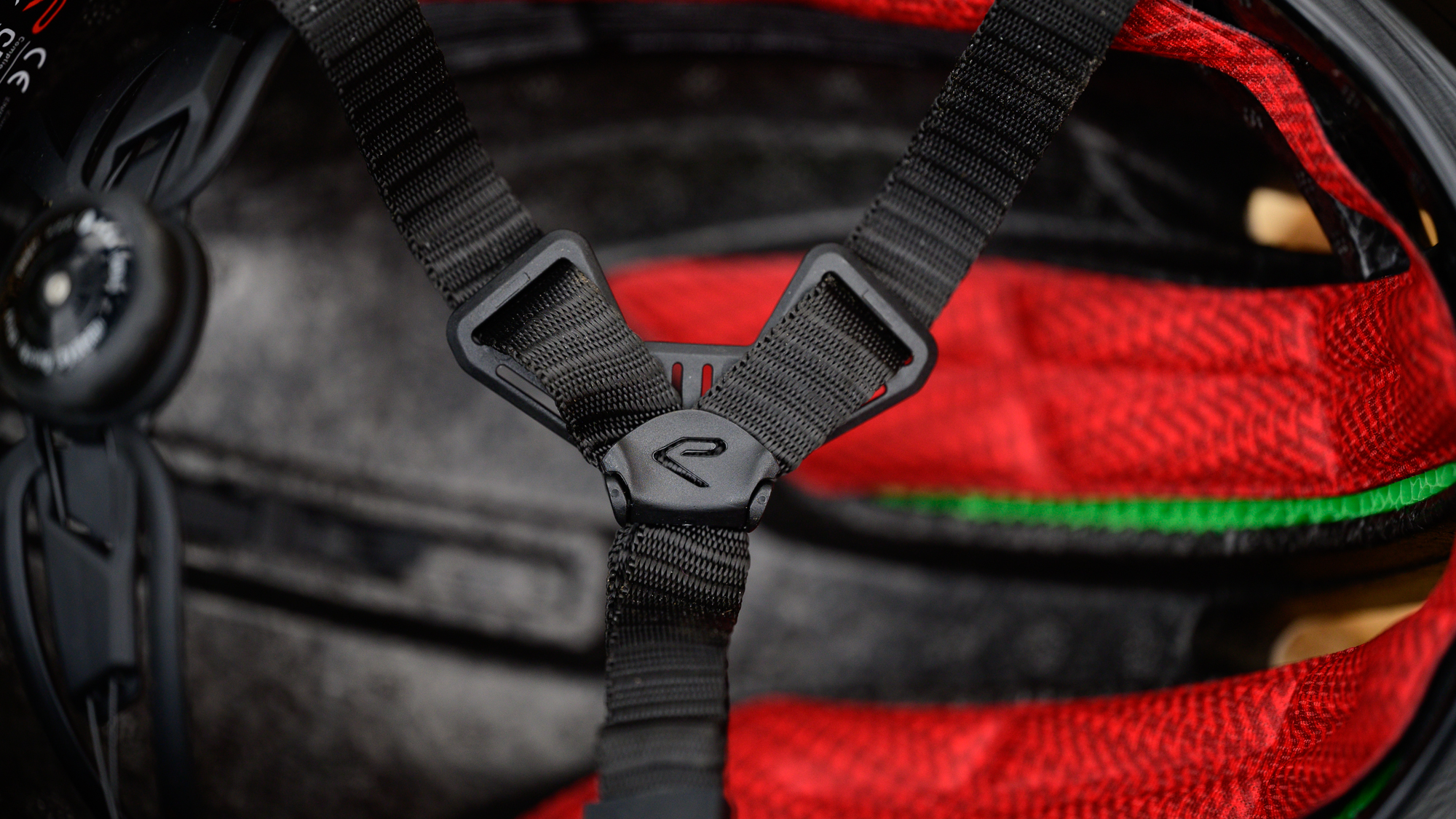
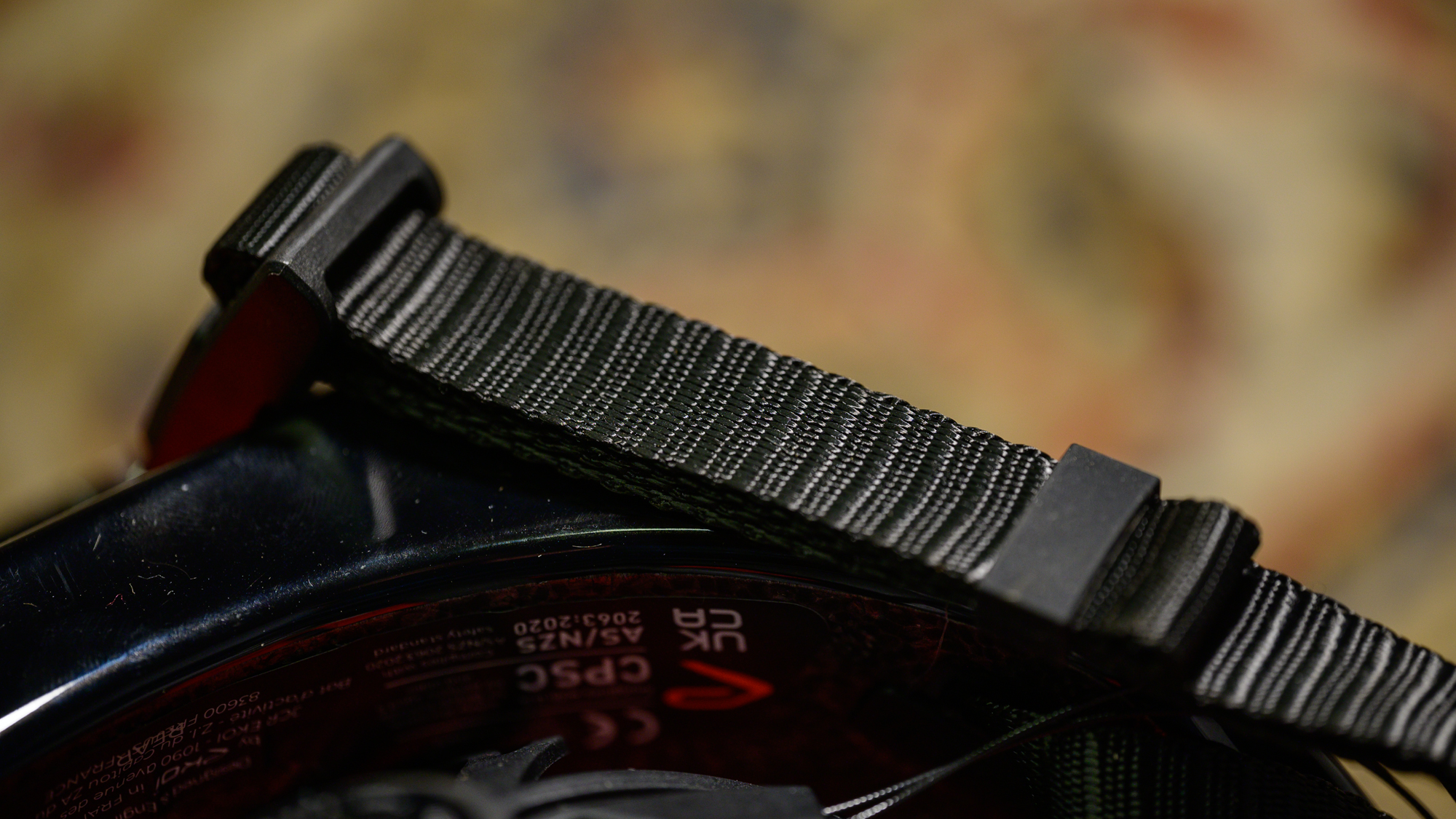

Performance
When it comes to aero helmets there are a lot of things I have to take for granted. I can't test impact protection so I have to rely on Virginia Tech testing to get a sense of relative performance. I also can't test aerodynamic performance and have to take an even bigger leap of faith by accepting the word of the company selling a helmet. So when the Ekoi Aerodinamica arrived and Ekoi didn't have any claim of performance or a Virginia Tech result, I had to think through what that meant.
Safety is fairly straightforward. Although Virginia Tech provides a good third-party ranking of helmets a lack of score doesn't necessarily mean anything at all. Every helmet you can buy has passed the required government safety tests for the location where they are available for sale. Over the years I've tested helmets I've seen a variety of legitimate reasons that a good helmet lacks a Virginia Tech score and I've also seen good helmets that don't offer any reason for not having a test result. For years Kask helmets lacked the score because of a disagreement about the methodology and none of the current POC helmets have a score either.
Then there are aero performance claims. They almost always come from the company selling the helmets. I doubt they are untrue but there's a 100% chance that those statements highlight the good and leave out other details. Ekoi doesn't offer any for the Aerodinamica and when I pushed all I got was "a claimed 3-watt savings and 2.6% better cooling compared to leading aero helmets" but that doesn't say much.
In both cases, it leaves a question of what the absence of those details means? Probably not much in the end but it does make my job a bit harder. I like to have clear claims to measure against and highlight. Ekoi offers none for the Aerodinamica. There are several platitudes like "Sculpted to perfection by the magic of the wind tunnel" and there are several respected names involved but concrete claims are lacking. Instead of measuring against specific claims, I had to take the Ekoi Aerodinamica out on my bike and see what came to the forefront.
In the end, what stood out to me was a combination of fashion and comfort. On the comfort side of things, there are several strap details that I covered above as likely weight contributors. I personally like to use the lightest helmet possible but I have to concede that the magnetic buckle and thick webbing are very comfortable. The rear cradle is easy to adjust and flexible enough that it eliminates any pressure points and the combination of the straps and the cradle do a great job keeping the Ekoi Aerodinamica stable on your head. The thick padding also feels luxurious, and I love how little it moves around on a day-to-day basis. I'm less in love with the rear dial though.
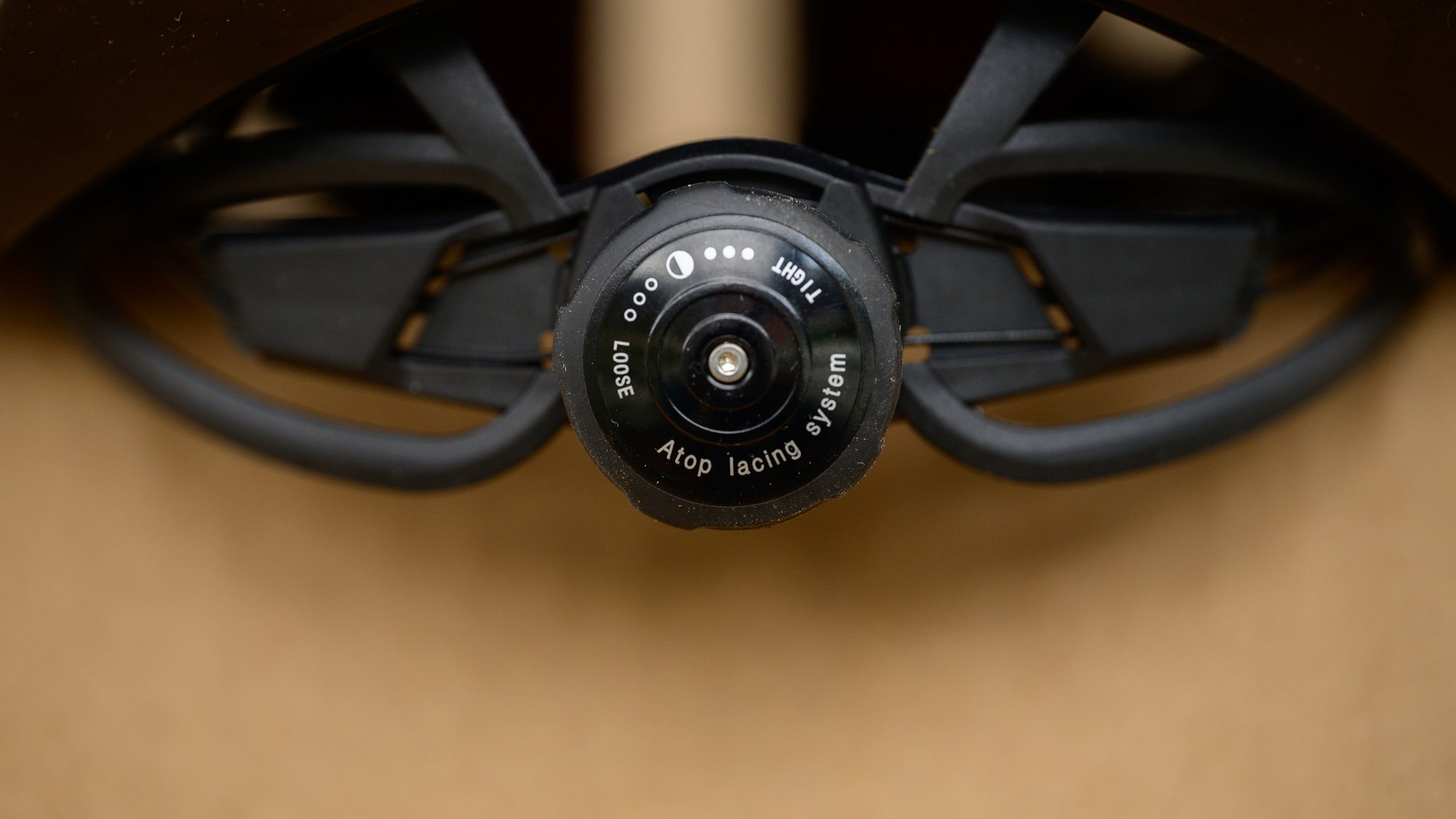
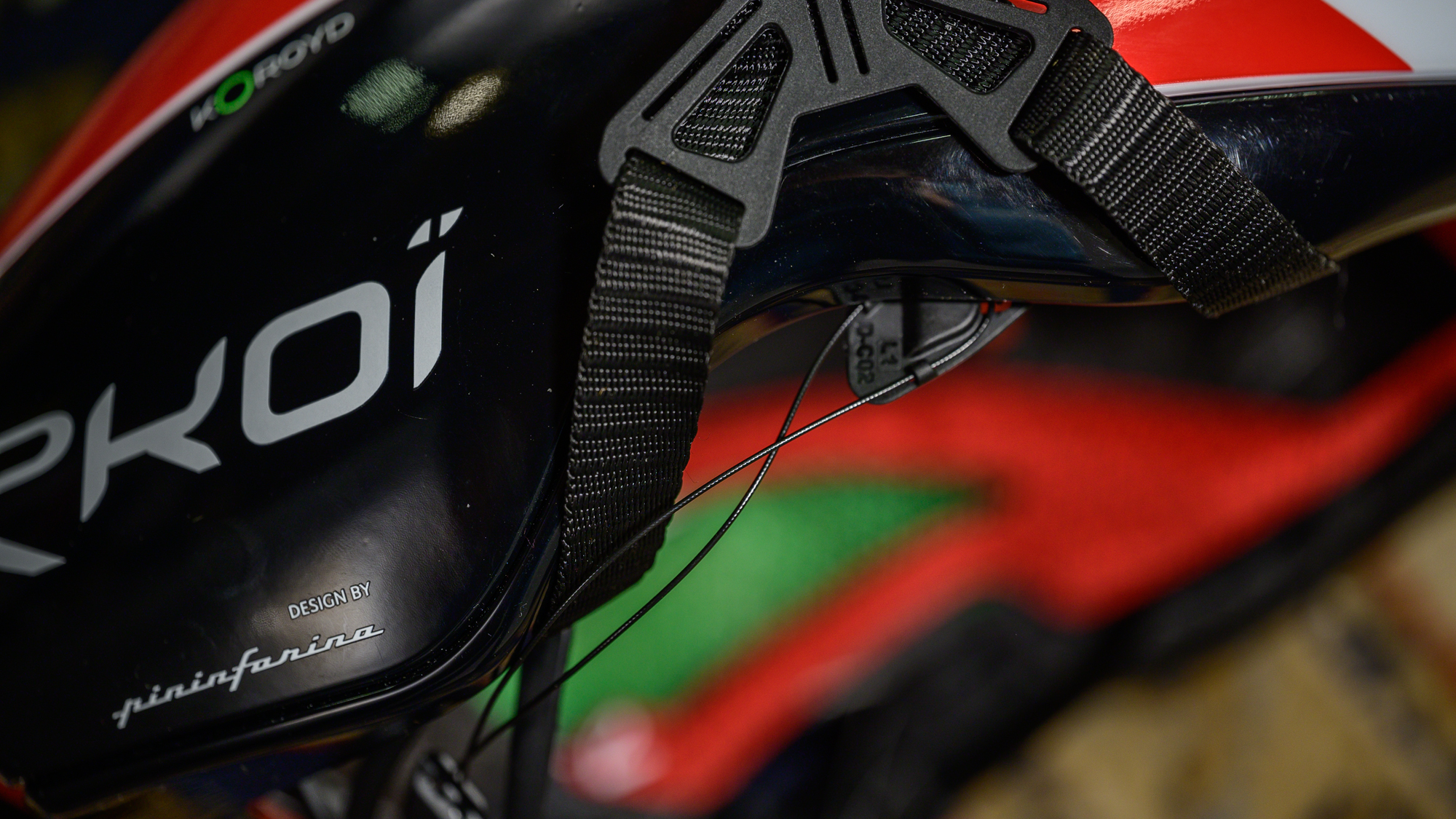

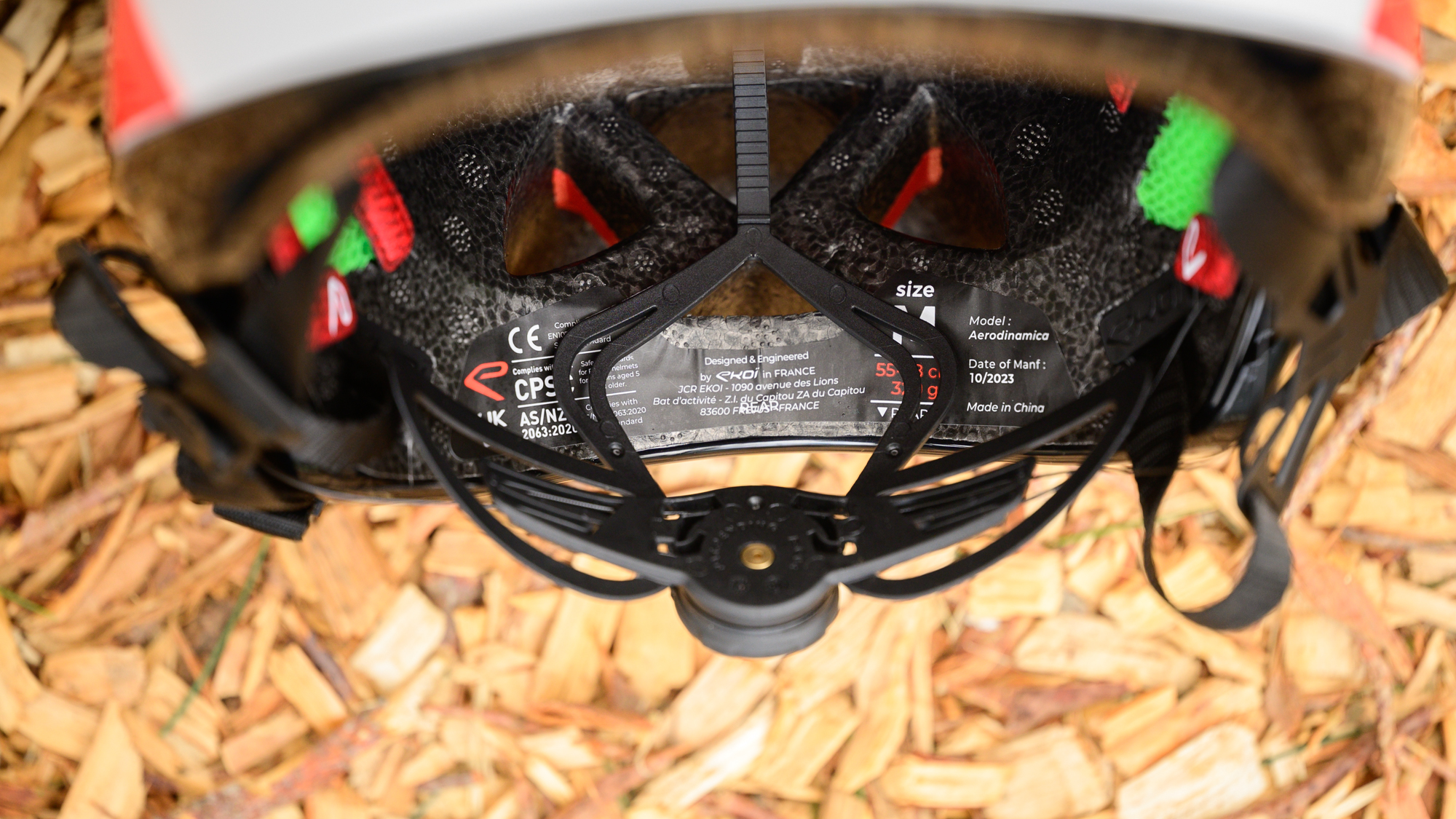
Unlike BOA, ATOP doesn't adjust in both directions. When tightening the helmet down there are indentations that click and it's very similar to BOA. In this particular case, the outer edge of the dial uses rubber that also helps it feel fast and precise. When it's time to loosen the dial though, it's not precise at all. Instead of clicking indents it takes roughly half a rotation to loosen the grip on the cable then the dial stops. To get any adjustment you pull the cable out of the dial then stop and tighten it again. It's not difficult when wearing it but it's a hassle if you want to loosen it all the way up before putting the helmet on over a cap.
The other aspect of this helmet is the fashion. Fashion is a matter of opinion but I'm a big proponent of being truthful about how important it is. Performance doesn't have to drive every choice and if you like the style of this helmet it's worth allowing that to be a deciding factor. Asking Pininfarina to design a helmet and highlighting that fact is a fashion play so go ahead and consider it. As I said, I see a bit of a golden age influence and a reference to Pininfarina cars.
There's another aspect to fashion though and that is the way a helmet integrates with sunglasses. Given that I test a lot of helmets whenever I have a new one, I spend a lot of time finding sunglasses that complement the style. To my mind, some helmets only work well with a few pairs. The Aerodinamica seemed to buck that trend and it worked well with almost every pair of glasses I tried. As I test in the middle of winter, I'm spending a lot of time in the Smith Flywheel and those glasses, with the slightly high centre, are some of the best. I also tried a number of my summer glasses, including my favourite POC Propel, and all of them did a great job hugging the front edge of the Aerodinamica for a seamless look. Even the Assos Donzi glasses, which have a thick white rim and are notoriously hard to match with a helmet, fit the Aerodinamica like a glove.
Keep in mind though that I'm talking about a fashion match between glasses and helmet. I'm not one to stash my glasses but if you are this is not going to be a great helmet for you. The front vents aren't all that wide and while you can flip your glasses and stick the arms into the vents securely, they stick out. There's not enough room to get your lens back against the helmet so while I suppose it's not impossible to do, it's a comical look.
The other big question with a helmet is always heat management. It's winter so I don't have direct experience with hot climbs in the Aerodinamica but it's not hard to tell this is not a highly breathable helmet. Like other modern aero helmets, as long as you are moving the air moves through the helmet but I wouldn't want to choose this one for a day of climbing. On the other hand, if you are looking for a winter helmet, there’s a set of plugs for the vents coming soon so this could be a good option for fast summer rides as well as rainy winter rides.
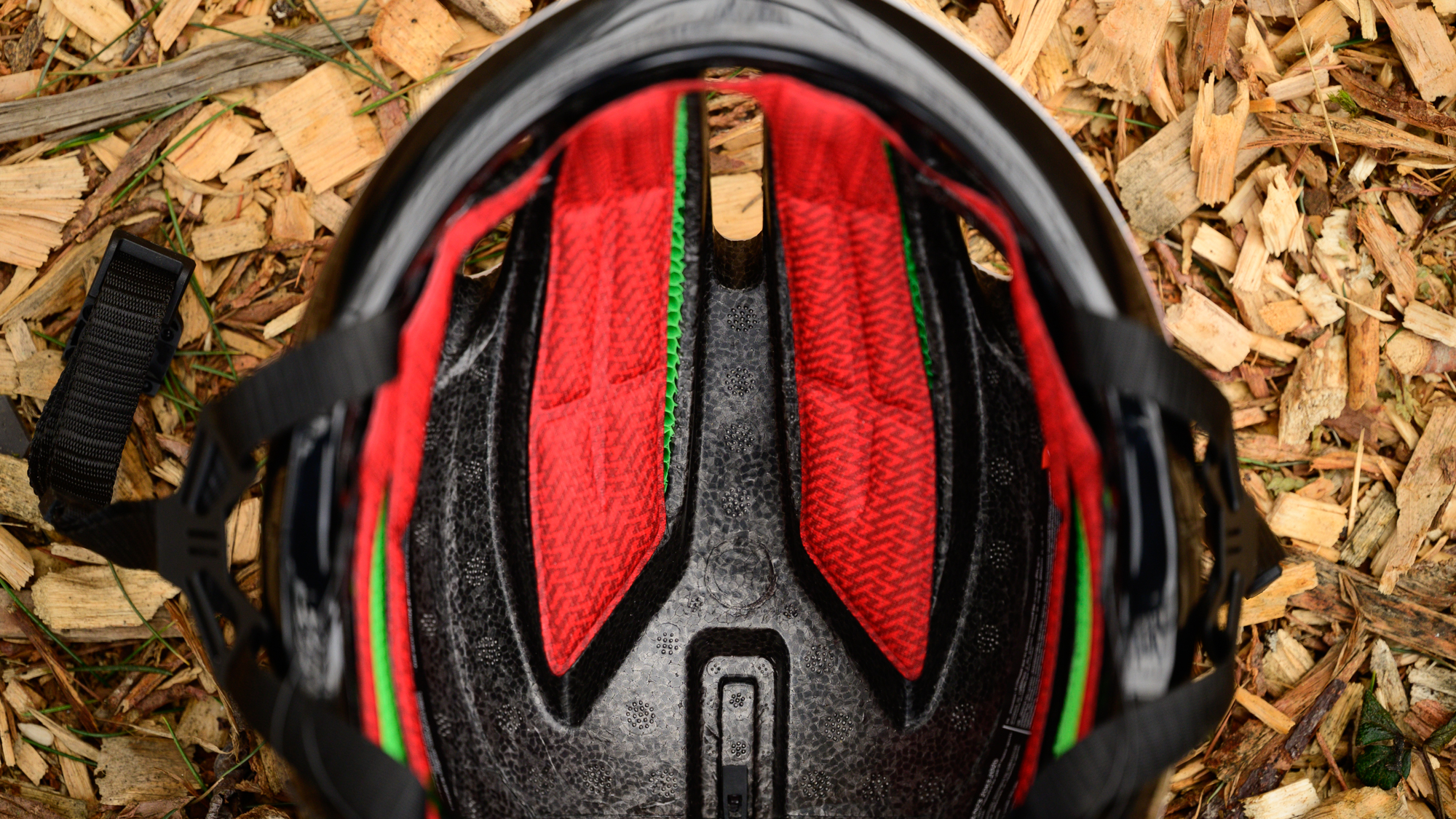
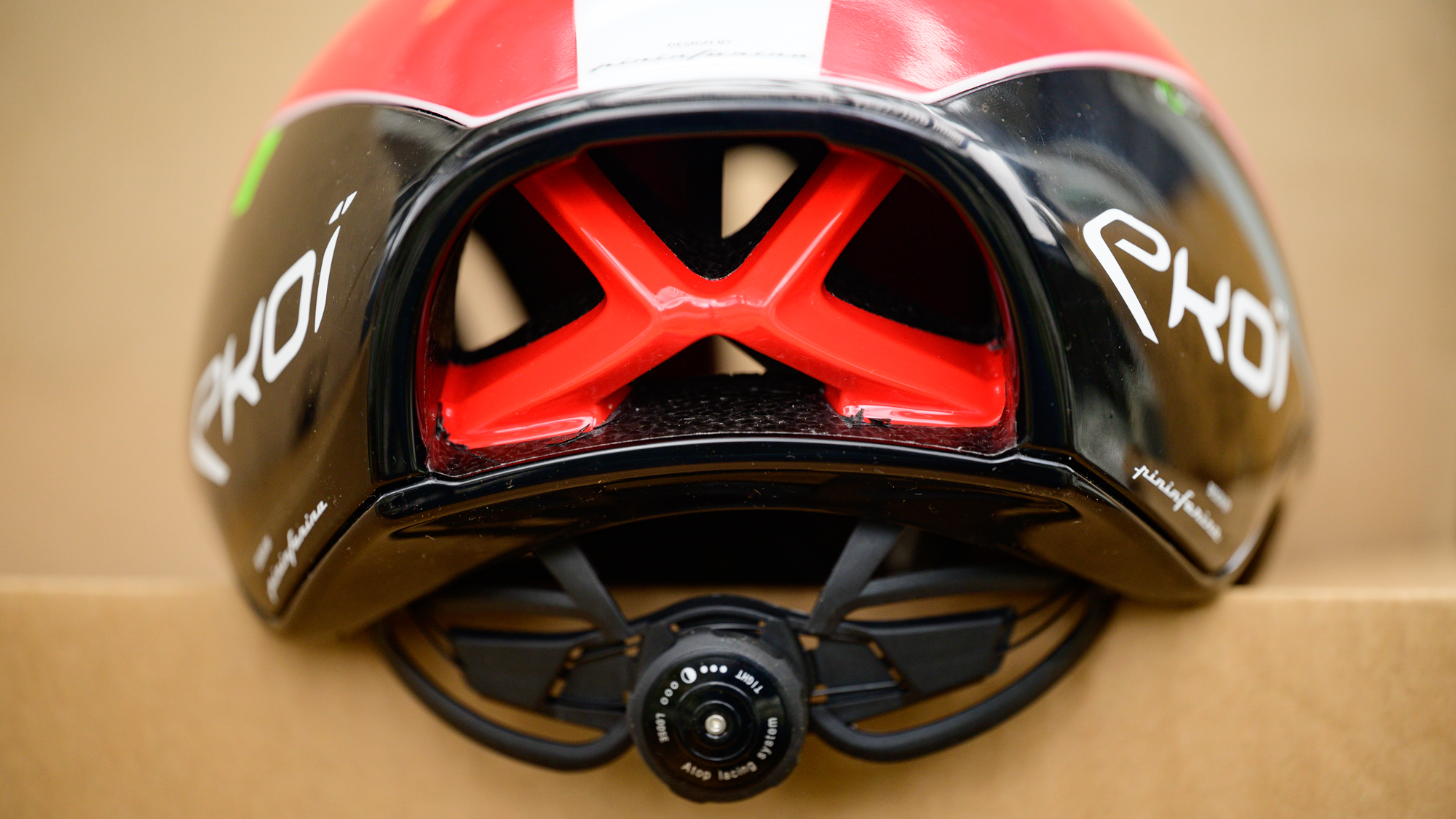
Verdict
I'm repeating myself but I like it when a company gives a clear and concise aerodynamic statement for an aero helmet. Smith lists several helmets and how much faster the Ignite helmet is in comparison and wheel company Hunt is amazing at providing white papers for its wheels. Most companies aren't doing that though. Giro claims the "Eclipse beats the closest aero road helmet competitor by 14 seconds over 100 miles at 25mph" and that's one of my favourite helmets. The reality is that until I take a bunch of helmets to a wind tunnel. I won't be one hundred per cent sure about any specific helmet aero claims. I do believe that the EKOÏ Aerodinamica is more forgiving of a turned head than the Trek Ballista thanks to its shape at the rear.
Since performance analysis is off the table, that leaves your sense of style and how comfortable a helmet is. The Ekoi Aerodinamica is one of the more comfortable helmets I can remember testing. I love the stability and thick pads and it's really nice that the webbing is heavy enough that it's not finicky. The rear cradle folds down and out of the way for storage but it doesn't come apart and it's easy to adjust. If you also obsess about the way your glasses interact with the brow of your helmet then you are likely going to love this helmet as long as the rest of the silhouette works for you.
The downside of the comfort though is that this is a heavy helmet. Given that some people don't mind lights and accessories on their helmets, not everyone is as sensitive to that detail. If heavy helmets bug you though, there are better choices.








